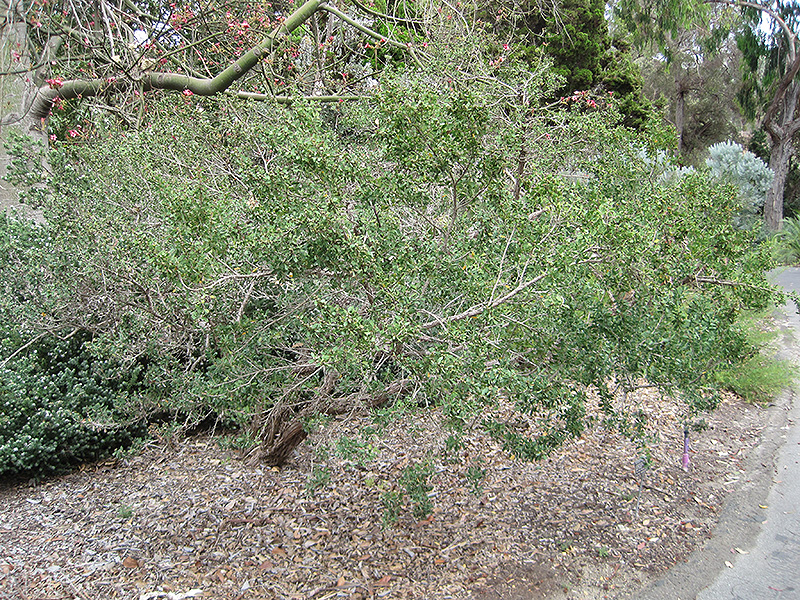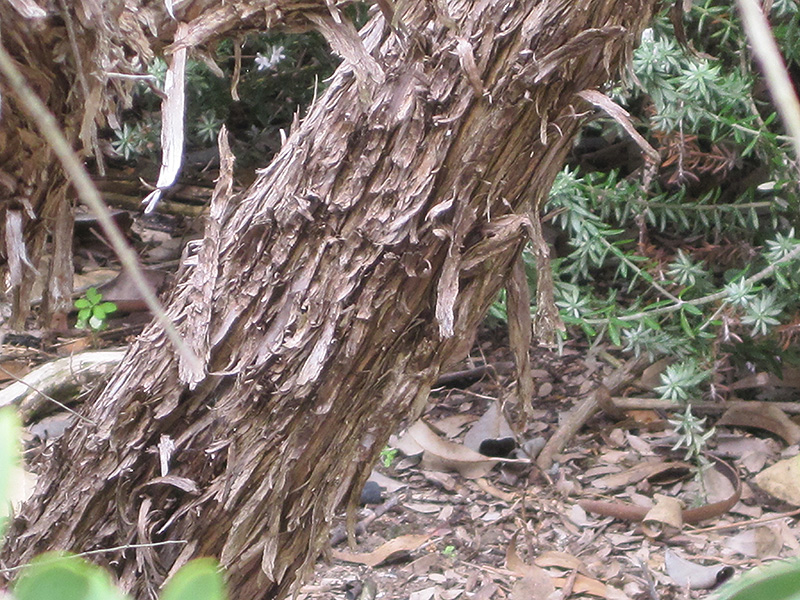Plant Finder
Height: 30 feet
Spread: 30 feet
Sunlight:
![]()
![]()
Hardiness Zone: 8b
Other Names: Coastal Tea-Tree, Manuka
Description:
A spreading, sculptural large shrub or small tree with attractive foliage on pendulous branches; shows good drought tolerance; covered with lovely white flowers in spring; prune to avoid seed from spreading; flowering stems make nice cutflowers
Ornamental Features
Australian Tea-Tree is covered in stunning white flowers with tan eyes along the branches in early spring. The flowers are excellent for cutting. It has attractive grayish green evergreen foliage. The small oval leaves are highly ornamental and remain grayish green throughout the winter.
Landscape Attributes
Australian Tea-Tree is a dense multi-stemmed evergreen tree with an upright spreading habit of growth. Its relatively fine texture sets it apart from other landscape plants with less refined foliage.
This is a relatively low maintenance tree, and should only be pruned after flowering to avoid removing any of the current season's flowers. Deer don't particularly care for this plant and will usually leave it alone in favor of tastier treats. It has no significant negative characteristics.
Australian Tea-Tree is recommended for the following landscape applications;
- Shade
- Mass Planting
- Hedges/Screening
- General Garden Use
- Container Planting
Planting & Growing
Australian Tea-Tree will grow to be about 30 feet tall at maturity, with a spread of 30 feet. It has a low canopy with a typical clearance of 1 foot from the ground, and is suitable for planting under power lines. It grows at a medium rate, and under ideal conditions can be expected to live for 40 years or more.
This tree does best in full sun to partial shade. It prefers dry to average moisture levels with very well-drained soil, and will often die in standing water. It is considered to be drought-tolerant, and thus makes an ideal choice for xeriscaping or the moisture-conserving landscape. It is not particular as to soil type, but has a definite preference for acidic soils, and is able to handle environmental salt. It is somewhat tolerant of urban pollution, and will benefit from being planted in a relatively sheltered location. This species is not originally from North America.
Australian Tea-Tree is a fine choice for the yard, but it is also a good selection for planting in outdoor pots and containers. Its large size and upright habit of growth lend it for use as a solitary accent, or in a composition surrounded by smaller plants around the base and those that spill over the edges. It is even sizeable enough that it can be grown alone in a suitable container. Note that when grown in a container, it may not perform exactly as indicated on the tag - this is to be expected. Also note that when growing plants in outdoor containers and baskets, they may require more frequent waterings than they would in the yard or garden.





